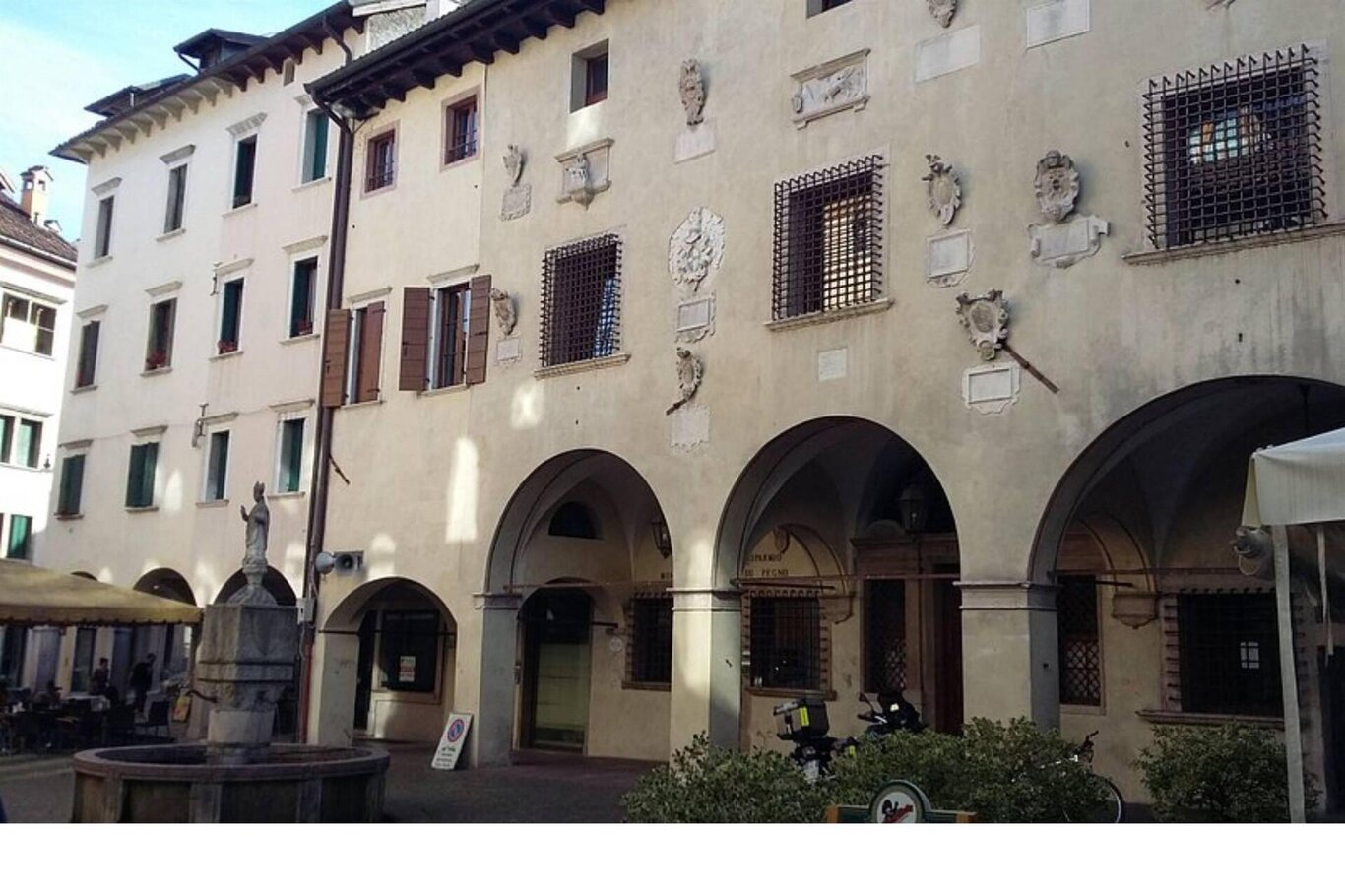Started in 1501 at the urging of the preaching of the Servite friar Elia from Brescia, the palace was completed in 1531. It still retains the original entrance door reinforced with iron strips, as well as part of the fresco decoration that originally was meant to entirely cover the interior spaces.
On the facade, in addition to the original symbol of the Monte, namely a round stone "Pietà", and a Venetian lion partially chiseled by the Jacobins in 1797, there are numerous coats of arms of the Venetian rectors who ensured the administrative and managerial autonomy of the Monte from repeated attempts of interference carried out by the Council of Nobles. The related inscriptions were carefully chiseled away by the Venetians in 1691, following a decision against the excessive glorification of the rectors from the mainland.
In the adjoining church of the Blessed Virgin of Health, under the portico on the ground floor, important works by Andrea Brustolon (1662-1732) and Leonardo Ridolfi (1684-1758).
